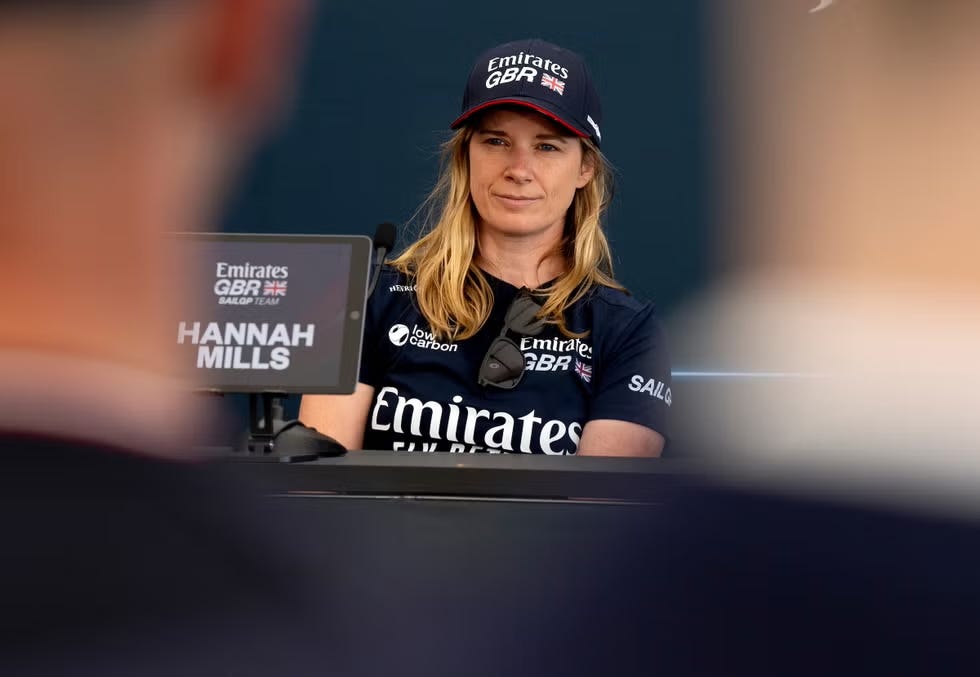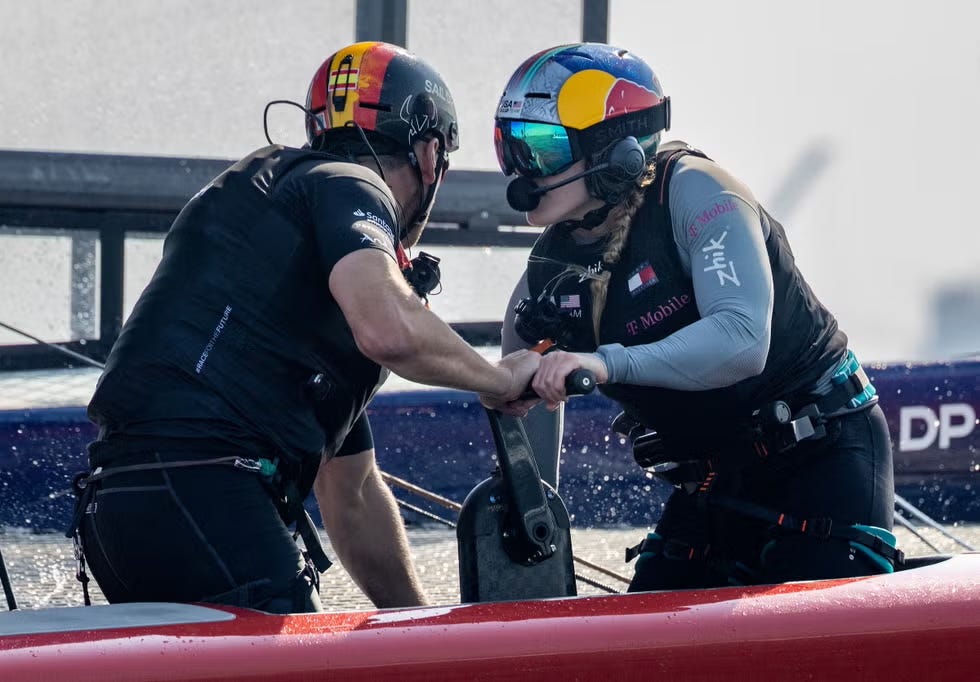“I Want to Show Girls There Is Space for Them”

When Martine Grael crossed the starting line of her very first SailGP race in November 2024, it wasn’t the breathtaking speeds or the gravity-defying nature of the flying sailboats that felt like the biggest challenge.
“It is the psychological side without a doubt,” she says.
For months, she had given her all in training sessions while getting to grips with the league’s high-tech F50 catamarans. Developed by SailGP, they sail at speeds of up to 60 mph, with the velocity lifting the hulls out of the water (think: an airplane taking off). When the boats turn corners, the G-force that pins the athletes down is similar to those felt by astronauts during liftoff.
“We push ourselves to the limit, and at some level even get used to [being at the limit],” adds Grael. “But if your head isn’t right, not in the right place, then that compromises everything else.”

A double gold medalist who hails from a Brazilian sailing dynasty (her father has five medals and her brother has also competed internationally), Grael is used to having the weight of her home nation on her shoulders. Her SailGP debut also marked the first time the Mubadala Brazil team, or any team in South America, had competed in the league. But perhaps even more profoundly, it was also the first time a woman had competed as a driver (the team leader).
Sailing is a small sport, dominated by men at all levels, and most pro competitions take place just once every four years. Grael says this means that for women, there has historically been a “lack of opportunity leading to a lack of experience.”
A limited number of women have been able to make careers out of the sport. Along with Grael, they include Hannah Mills, who now races with the Emirates GBR SailGP team.

Mills says that, as is the case with many sports, one of the biggest challenges is getting young girls through the door—many abandon sailing before they truly get going because they don’t feel properly cared for. She notes how being out in the water for three to four hours during training sessions can be “really daunting” for girls at the age of puberty who are just starting their periods. “Even something as basic as going to the toilet is a real challenge,” she explains.
“A lot of the support around the sport—whether it’s coaches or officials—is male-dominated, and so there’s a need to create an environment where women feel comfortable to thrive,” Mills adds. She says SailGP has given her exactly this—shortly after joining her team in 2021, for example, she became pregnant and was supported by her team both pre- and postpartum: “They included me and made me feel valued even when I couldn’t race. When I came back, we’d have debriefs where I’d be at the back either breastfeeding or pumping. It was daunting for me, but the team did such a wonderful job making sure I was comfortable and had what I needed.”
While SailGP has disrupted the sailing world through its dramatic, adrenaline-filled annual Grand Prix (this season, 12 teams are competing in 12 events across five continents), it’s this approach to gender equality that feels most transformative. In 2021, before the launch of its second season, it was announced that all teams would include at least one female athlete on board, and would hold selection camps to identify new female talent. Organizers also launched a Women’s Performance Program, which fast-tracks training and development for athletes as well as off-boat crew, such as those in engineering and data.

Grael (left) training with members of the Danish and Italian teams
It’s a simple approach, and so far, it seems to be working. By 2030, SailGP wants every team to include two women in leadership positions on the boat, and in November 2024 the league held its largest-ever development camp for women, attended by 18 female athletes.
Many women compete in SailGP as strategists—the role Mills holds, which is second to the driver. American sailor Anna Weiss chose a different track: She was the first woman to race as a grinder, an intensely physical role that involves turning a heavy winch to generate power for the boat.

Weiss (right) grinds with a member of the Spanish team
“The biggest challenge for me is not comparing myself,” Weiss says. “All the men are extremely strong and fit and great sailors. But I have tried to fully embrace this opportunity, work really hard, and prove to myself that I belong.”
Weiss joined the U.S. SailGP team after a top 10 finish in an international competition held in 2021, and has since witnessed the growth of female representation in the sport. “I respect all the women in the league so much, and it’s great to share that camaraderie,” she says. “We all support each other and want to see each other succeed.”
It’s a sentiment the other two women echo, though rivalry between teams can be fierce—no surprise, given the $12.8 million prize pot up for grabs across the season, including $2 million for the winner of the grand final.
But winning isn’t always everything. “I think the most meaningful part has been seeing my personal growth and proving to myself that it is possible to take on a traditionally male-dominated role,” Weiss continues. “I just hope it can make an impact on others and start to change the narrative of what it means to be a woman in the sport. I want to show young girls that there is space for them in professional sailing.”
To discover more, visit SailGP.com.
elle




